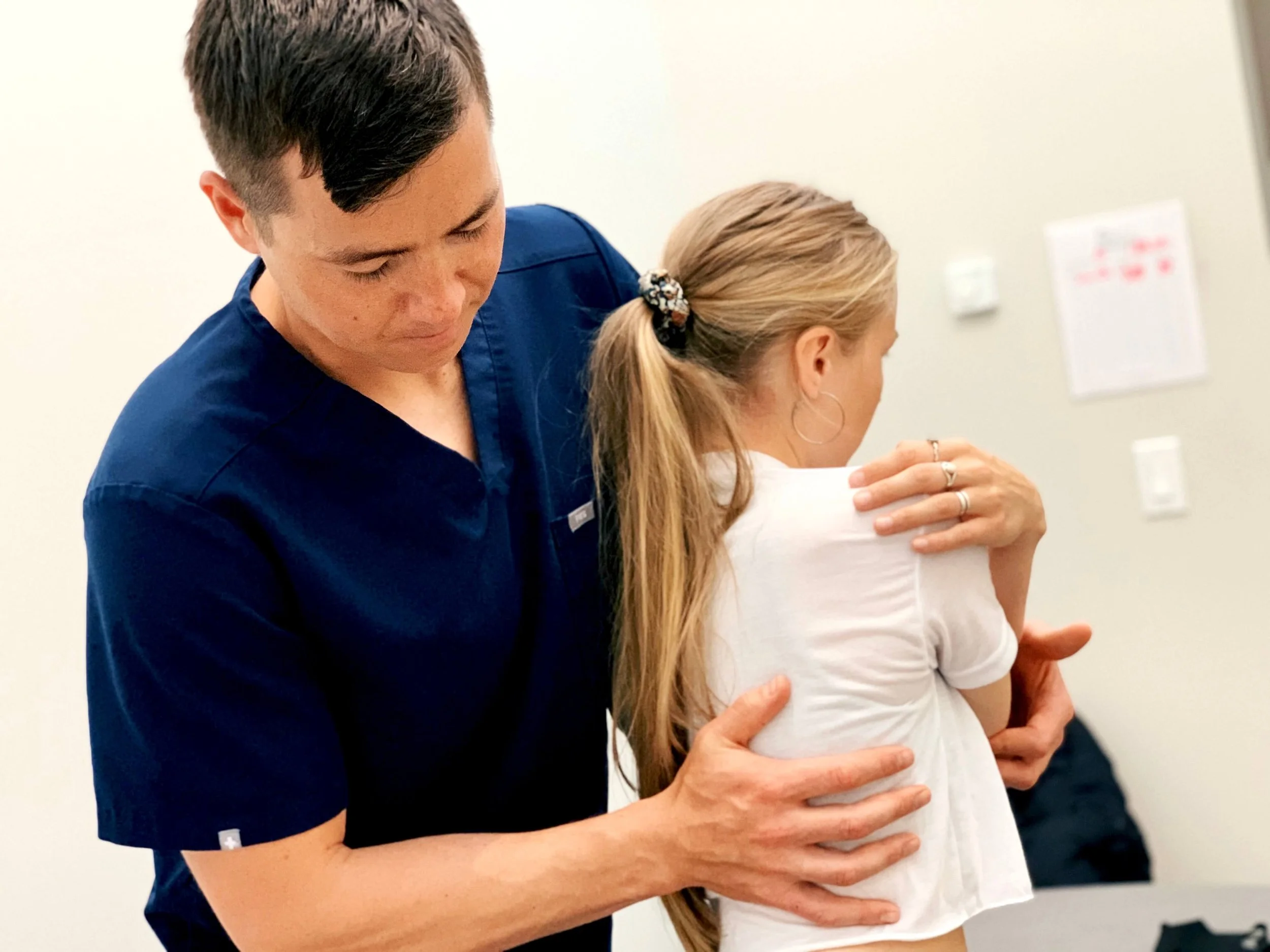Find Lasting Relief from Joint Pain in Vancouver
Whether your joint pain is caused by injury, overuse, or inflammation, our integrated team will help you get to the root cause and guide you toward real, lasting relief.
What Causes Joint Pain?
Joint pain can manifest in various ways, such as stiffness, swelling, and limited range of motion, and is influenced by factors such as injury, overuse, hormones, and inflammation. Many people notice joint discomfort during perimenopause, pregnancy, or even around their menstrual cycle due to fluctuating estrogen levels.
At Qi, we don’t just manage the symptoms. We explore underlying causes like poor circulation, muscular imbalances, stress, and systemic inflammation. Whether your pain is new or longstanding, we’ll help you understand what’s contributing to it and how to heal.
Integrated Approaches to Joint Pain Relief
At Qi, we treat joint pain with an individualized, holistic approach tailored to your specific needs and symptoms.
Osteopathy
Effective treatment of joint pain begins with a thorough assessment to identify which joint(s) are affected, evaluate their range of motion, and assess strength and endurance capacity. From there, hands-on therapy is used to reduce pain and improve mobility. This creates a solid foundation for introducing targeted mobility and strengthening exercises that are more comfortable and build the patient’s confidence.
As symptoms improve and confidence grows, the joint is progressively challenged to meet the demands of daily activities or fitness goals, working toward long-lasting relief and improved function.
Acupuncture and Traditional Chinese Medicine (TCM)
Joint pain is addressed through both the root cause and the local area of discomfort using acupuncture and Traditional Chinese Medicine (TCM). Acupuncture points are carefully selected to enhance the circulation of energy (Qi) and blood through the affected joints, thereby easing stiffness, reducing inflammation, and alleviating pain.
Gua Sha, a gentle scraping technique, is often used to break up stagnation, release tight tissues, and encourage healing in the surrounding muscles and fascia. Herbal formulas and simple dietary adjustments may be recommended to address underlying imbalances, such as liver and kidney deficiencies, that can increase the likelihood of joint pain.
Book Gavin Larsen, Registered TCM Practitioner and Acupuncturist
Naturopathic Medicine & Orthopedic Injections
Orthopedic injections such as Platelet-Rich Plasma (PRP), Prolotherapy, Hyaluronic Acid, and Corticosteroids offer minimally invasive solutions to reduce pain and inflammation. These therapies can stimulate tissue repair, lubricate joints, and temporarily reduce inflammation, helping to restore mobility and comfort without the need for surgery. They are especially valuable for individuals who have not responded fully to physical therapy, exercise, or medications, and can often delay or even prevent the need for surgical intervention. Ultrasound guidance is used for all orthopedic injections in the clinic for increased safety and efficacy.
Naturopathic medicine enhances these treatments by addressing the broader causes and contributors to joint pain. This might include optimizing nutrition, supporting the body’s anti-inflammatory pathways, improving biomechanics through physical therapies, and using supplements to promote healing. Together, these approaches support tissue regeneration, improve circulation, and reduce systemic inflammation.
Holistic Nutrition
Chronic inflammation is a common driver of joint discomfort, and what you eat plays a big role in how your body responds. A colourful, anti-inflammatory diet that’s rich in nourishing fats, fibre, and plant compounds can help support the root of your symptoms and support long-term joint health.
Nutrients like vitamin C, D, magnesium, and zinc are also key players when it comes to maintaining cartilage and resilience. When combined with gentle movement, stress support, and balanced weight management, nutrition can become part of a powerful toolkit for reducing pain and feeling better in your body.
Frequently Asked Questions
-
Joint pain can come from overuse, poor posture, repetitive movements, stress, or imbalances in how your body moves. It doesn’t always require a specific injury, sometimes it builds gradually from the way we sit, stand, or move every day.
-
Muscle pain usually feels like soreness or tension in the soft tissue, often after exercise or prolonged activity. Joint pain tends to feel deeper, sharper, or more localized to where two bones meet, like the knee, shoulder, or wrist, and can be aggravated by movement, pressure, or weight-bearing.
-
It’s a good idea to get your joint pain assessed if it:
Lasts longer than a few days
Wakes you up at night
Causes swelling or redness
Limits your movement
Is getting worse over time
-
This can happen when joints get stiff from lack of movement. Overnight or during long periods of sitting, fluid can settle in the joint, making it feel tight. Gentle movement usually helps improve circulation and reduce stiffness.
-
Exercise is healthy, but poor technique, lack of recovery, or muscular imbalances can place excess stress on your joints. Without proper support from surrounding muscles or fascia, the joints often take on more than they’re built for.
-
It depends on the cause and severity of your joint pain. In many cases, gentle, targeted movement can actually support healing—but certain types of exercise may aggravate symptoms.












